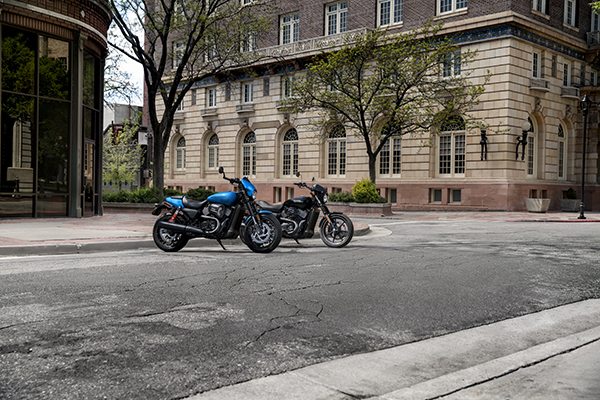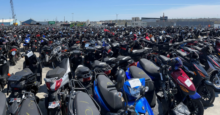Harley-Davidson sees U.S. retail sales decrease in Q4
In the fourth quarter, Harley-Davidson worldwide retail motorcycle sales declined 9.6 percent versus the prior year. Harley-Davidson U.S. retail motorcycle sales were down 11.1 percent and the overall industry was down 6.5 percent compared to the year-ago quarter. Harley-Davidson U.S. market share was 50.8 percent in the 601+cc segment in the fourth quarter.
Harley-Davidson, Inc. fourth quarter 2017 diluted EPS decreased to $0.05 from $0.27 in the fourth quarter of 2016. Fourth quarter 2017 net income was $8.3 million on consolidated revenue of $1.23 billion versus net income of $47.2 million on consolidated revenue of $1.11 billion in the fourth quarter of 2016. Fourth quarter 2017 revenue was up on higher shipments. Net income and EPS were adversely impacted by a $53.1 million income tax charge related to the enactment of the 2017 Tax Cuts and Jobs Act and a $29.4 million pre-tax charge for a voluntary product recall.
Full-year 2017 diluted EPS decreased to $3.02 from $3.83 in 2016. Full-year net income was $521.8 million on consolidated revenue of $5.65 billion versus net income of $692.2 million on consolidated revenue of $6.00 billion a year ago.
Harley-Davidson worldwide retail motorcycle sales were down 6.7 percent in 2017 compared to 2016. U.S. retail sales decreased 8.5 percent and international retail sales were down 3.9 percent.
“Our actions to address the current environment through disciplined supply and cost management position us well as we drive to achieve our long-term objectives to build the next generation of Harley- Davidson riders globally,” said Matt Levatich, president and chief executive officer, Harley-Davidson, Inc. “We finished 2017 with over 32,000 more Harley-Davidson riders in the U.S. than one year ago, and we delivered another year of strong cash generation and cash returns to our shareholders.”
Objective to build riders globally
As the company executed against its long-term objective to build the next generation of Harley- Davidson riders globally, 57 new international dealer points were added in 2017, and U.S. dealers trained more than 62,000 riders through the Harley-Davidson Riding Academy. The company also maintained its number one 601+cc motorcycle market share position in countries including the U.S., Canada, Japan, Australia and India for 2017.
The company also launched its model year 2018 lineup of motorcycles, featuring the all-new, highly- acclaimed Softail motorcycles featuring the powerful Milwaukee-Eight engine. Harley-Davidson remains fully committed to investing in product development to inspire new riders through redefining its product in traditional spaces and expanding into new spaces. The company is on target to launch its first electric motorcycle within 18 months. Today, the company announces it will invest more aggressively to lead in the application of electric motorcycle technology to inspire ridership among a new audience.
“The EV motorcycle market is in its infancy today, but we believe premium Harley-Davidson electric motorcycles will help drive excitement and participation in the sport globally,” stated Levatich. “As we expand our EV capabilities and commitment, we get even more excited about the role electric motorcycles will play in growing our business.”

Manufacturing optimization
Harley-Davidson plans to further improve its manufacturing operations and cost structure by commencing a multi-year manufacturing optimization initiative anchored by the consolidation of its motorcycle assembly plant in Kansas City, Mo. into its plant in York, Pa. The company expects to incur restructuring and other consolidation costs of $170 to $200 million and capital investment of approximately $75 million over the next two years and expects ongoing annual cash savings of $65 to $75 million after 2020.
“The decision to consolidate our final assembly plants was made after very careful consideration of our manufacturing footprint and the appropriate capacity given the current business environment. Our Kansas City assembly operations will leave a legacy of safety, quality, collaboration and manufacturing leadership,” stated Levatich.
2018 outlook
For 2018, Harley-Davidson anticipates full-year motorcycle shipments to be approximately 231,000 to 236,000 motorcycles. In the first quarter of 2018, Harley-Davidson expects to ship approximately 60,000 to 65,000 motorcycles.
Harley-Davidson expects full-year 2018 operating margin as a percent of revenue to be approximately 9.5 to 10.5 percent including manufacturing optimization costs of $120 to $140 million.
The company anticipates 2018 capital expenditures of $250 million to $270 million which includes approximately $50 million to support manufacturing optimization.








